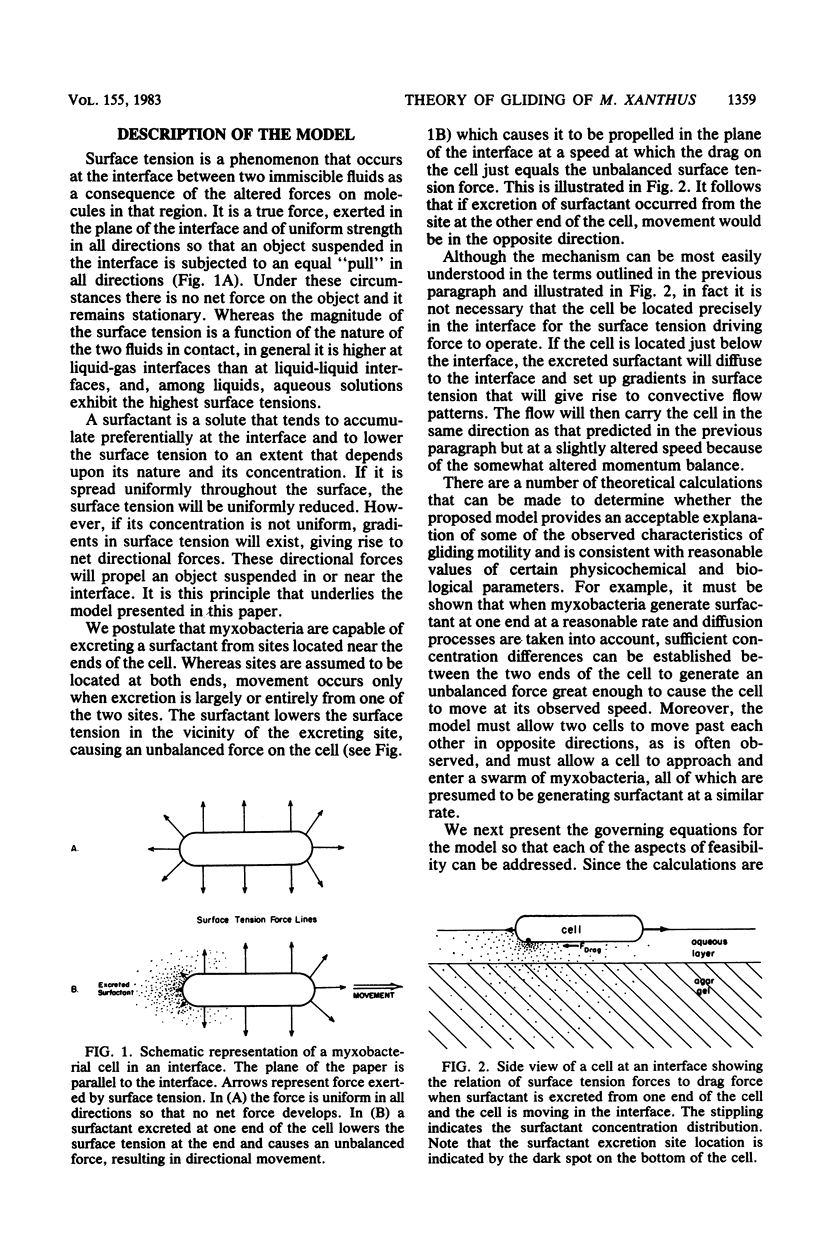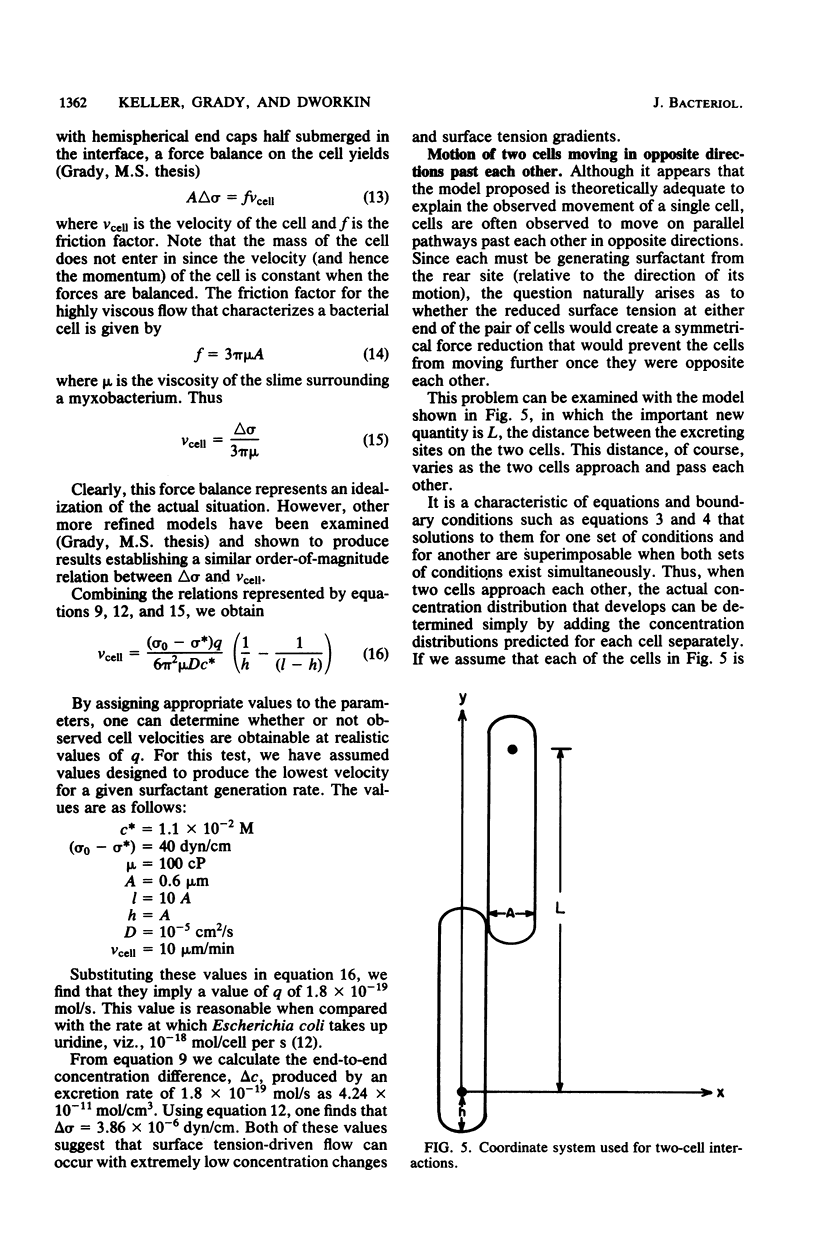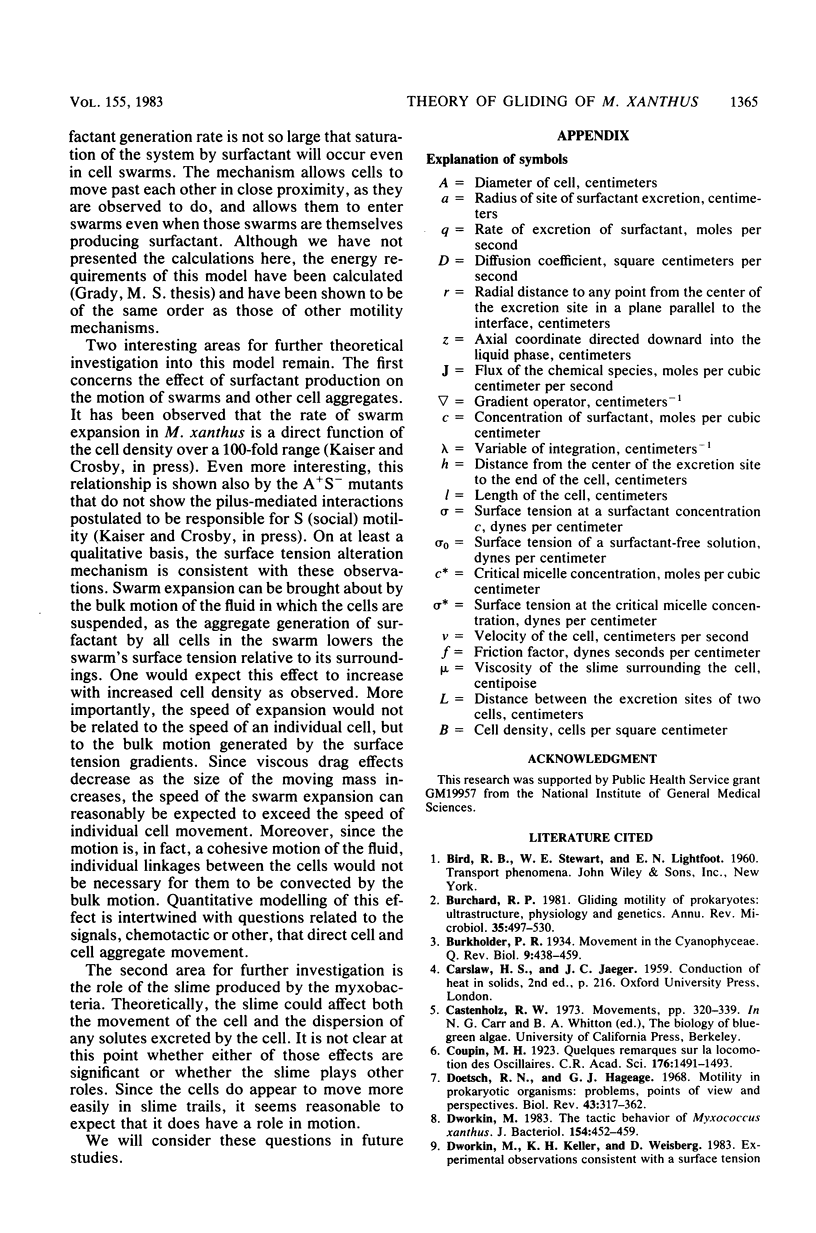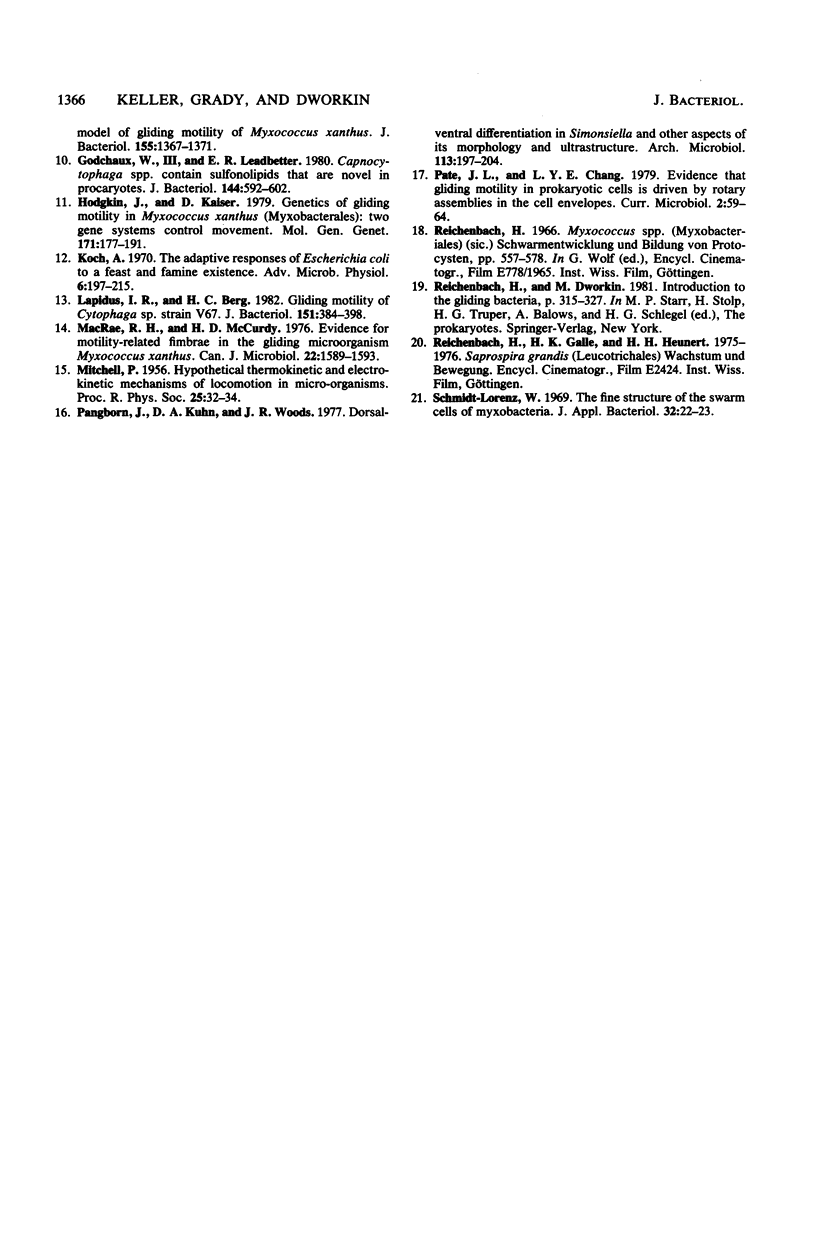Abstract
We propose that surface tension is the driving force for the gliding motility of Myxococcus xanthus. Our model requires that the cell be able to excrete surfactant in a polar and reversible fashion. We present calculations that (i) estimate the surface tension difference across a cell necessary to move the cell at the observed rate, which is less than 10(-5) dyn/cm, an extremely small value; (ii) estimate the rate of surfactant excretion necessary to produce the required surface tension difference, a rate that we conclude to be metabolically reasonable; (iii) predict the behavior of cells moving in close apposition to each other, and show that the model is consistent with observed behavior; and (iv) predict the behavior of cells moving in dense swarms. In an accompanying paper we present experimental evidence to support the surface tension model.
Full text
PDF








Selected References
These references are in PubMed. This may not be the complete list of references from this article.
- Burchard R. P. Gliding motility of prokaryotes: ultrastructure, physiology, and genetics. Annu Rev Microbiol. 1981;35:497–529. doi: 10.1146/annurev.mi.35.100181.002433. [DOI] [PubMed] [Google Scholar]
- Doetsch R. N., Hageage G. J. Motility in procaryotic organisms: problems, points of view, and perspectives. Biol Rev Camb Philos Soc. 1968 Aug;43(3):317–362. doi: 10.1111/j.1469-185x.1968.tb00963.x. [DOI] [PubMed] [Google Scholar]
- Dworkin M., Keller K. H., Weisberg D. Experimental observations consistent with a surface tension model of gliding motility of Myxococcus xanthus. J Bacteriol. 1983 Sep;155(3):1367–1371. doi: 10.1128/jb.155.3.1367-1371.1983. [DOI] [PMC free article] [PubMed] [Google Scholar]
- Dworkin M. Tactic behavior of Myxococcus xanthus. J Bacteriol. 1983 Apr;154(1):452–459. doi: 10.1128/jb.154.1.452-459.1983. [DOI] [PMC free article] [PubMed] [Google Scholar]
- Godchaux W., 3rd, Leadbetter E. R. Capnocytophaga spp. contain sulfonolipids that are novel in procaryotes. J Bacteriol. 1980 Nov;144(2):592–602. doi: 10.1128/jb.144.2.592-602.1980. [DOI] [PMC free article] [PubMed] [Google Scholar]
- Lapidus I. R., Berg H. C. Gliding motility of Cytophaga sp. strain U67. J Bacteriol. 1982 Jul;151(1):384–398. doi: 10.1128/jb.151.1.384-398.1982. [DOI] [PMC free article] [PubMed] [Google Scholar]
- MacRae T. H., McCurdy D. Evidence for motility-related fimbriae in the gliding microorganism Myxococcus xanthus. Can J Microbiol. 1976 Oct;22(10):1589–1593. doi: 10.1139/m76-234. [DOI] [PubMed] [Google Scholar]
- Pangborn J., Kuhn D. A., Woods J. R. Dorsal-ventral differentiation in Simonsiella and other aspects of its morphology and ultrastructure. Arch Microbiol. 1977 Jun 20;113(3):197–204. doi: 10.1007/BF00492025. [DOI] [PubMed] [Google Scholar]
- Schmidt-Lorenz W. The fine structure of the swarm cells of myxobacteria. J Appl Bacteriol. 1969 Mar;32(1):22–23. doi: 10.1111/j.1365-2672.1969.tb02184.x. [DOI] [PubMed] [Google Scholar]


